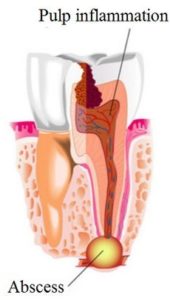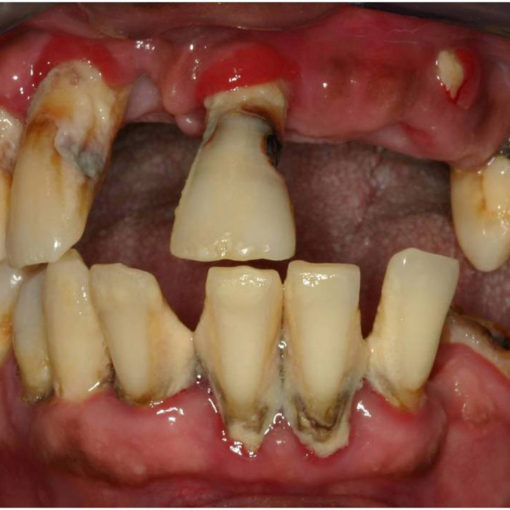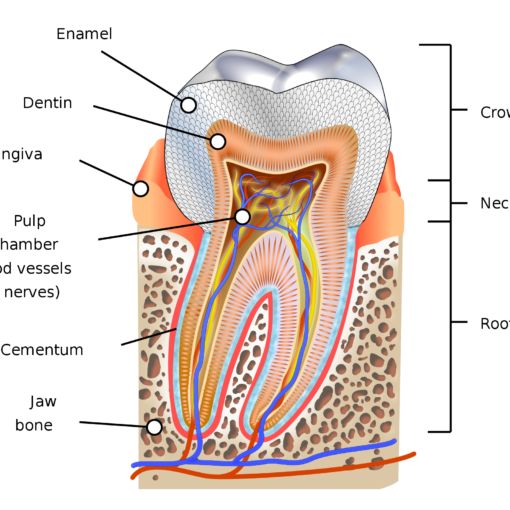Let’s Talk Tooth Decay
Tooth Decay is one of the top reasons to brush, floss and keep your dental appointments. This is the act of rotting and decomposing through the action of bacteria and fungi, with the resolution of a hole (cavity) in the tooth. Sounds awful, when it’s in your own mouth, but it’s very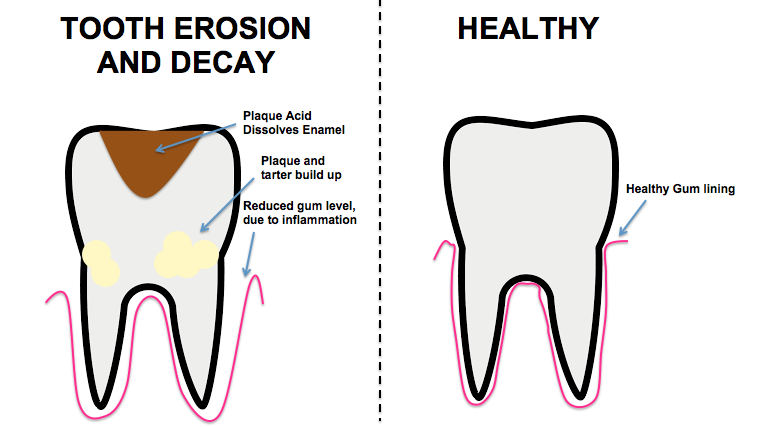 common. A whopping ninety-two percent of adults have dental caries, even though it’s a preventable condition.
common. A whopping ninety-two percent of adults have dental caries, even though it’s a preventable condition.
Decay forms by plaque interacting with carbohydrates, forming an acid on the tooth. As the tooth bathes in acid the enamel weakens (like the shell of an egg soaked in vinegar). When it’s a consistent occurrence the decay burrows deeper into the tooth and a cavity is formed forcing dental treatment as the only option.
Tooth Decay progresses by starting with white chalky marks and darkens as it worsens.
Demineralization (or decalcification) is the early stage on the tooth The acid has dissolved the outer superficial layer of the tooth surface. The acid leaches the minerals (calcium and phosphate ions) out of the enamel leaving the area with white spots. This stage can be stabilized with thorough brushing, flossing and fluoride use. By removing the plaque to minimize the acid, dental treatment can be prevented. Fluoride use is significant at this stage to strengthen the enamel, making it harder for acid to soften it. As decay progresses it turns yellow to light brown and at the later stage it appears dark brown to black. At this point tooth structure is lost.

Degrees of Tooth Decay
- Starts in the enamel. The hardest and thickest part of the tooth is the enamel. It can take a long time to fully penetrate through this layer. At this degree it usually is considered a “watch” from the dentist. The hope is to stabilize this process with diligent brushing and flossing to keep the plaque very minimal. Since fluoride hardens the enamel, fluoride is highly beneficial at this phase, by overriding the softening of the tooth from the acid.
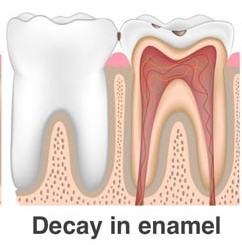
- Travels into the dentin. Once it’s through the enamel, the next or inner layer, is dentin. This layer is the inverse of enamel. It’s thinner, softer and that much closer to the nerve. Decay travels faster in this level of the tooth. Treatment is usually required; the option can go from a filling to a root canal quickly. This is the stage where it’s better to care of the tooth sooner than later.

- Ouch! It’s reached the nerve. The degree of this decay process is truly felt, during the day and at night, the decay has journeyed through three layers of tooth. When decay reaches the pulp, center of the tooth, (composed of blood vessels, tissue, and the nerve) it causes an infection. The infected pulp tissue swells, but has no place to go due to the dentin preventing it from expanding and releasing. The swollen tissue squeezes the blood vessels, the blood supply to the pulp is cut off and the pulp dies which causes severe pain. On this occasion, it becomes expensive with finances and time. The treatment to fix this situation is a root canal and a crown—around $2,000, when it could have been a couple hundred dollars for a filling.
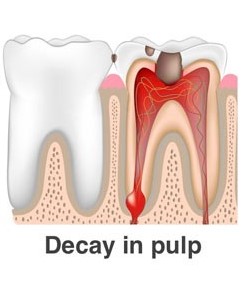
- Systemic risk. The infection continues through the root of the tooth causing an abscess (a collection of pus that has built up within the tissue). This infection travels to the surrounding tissue, enters the bloodstream, causing a system-wide infection that may be life-threatening.
